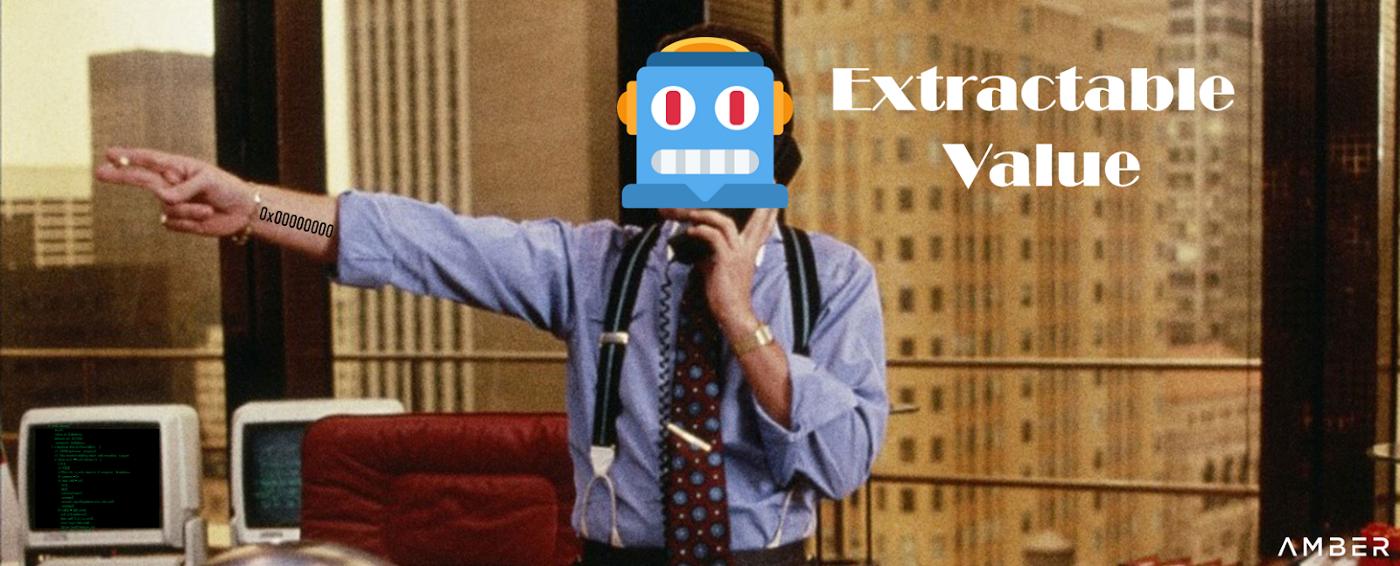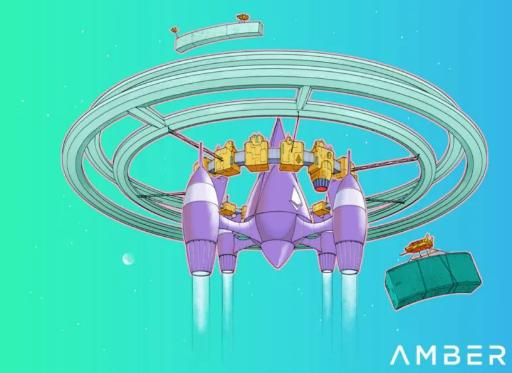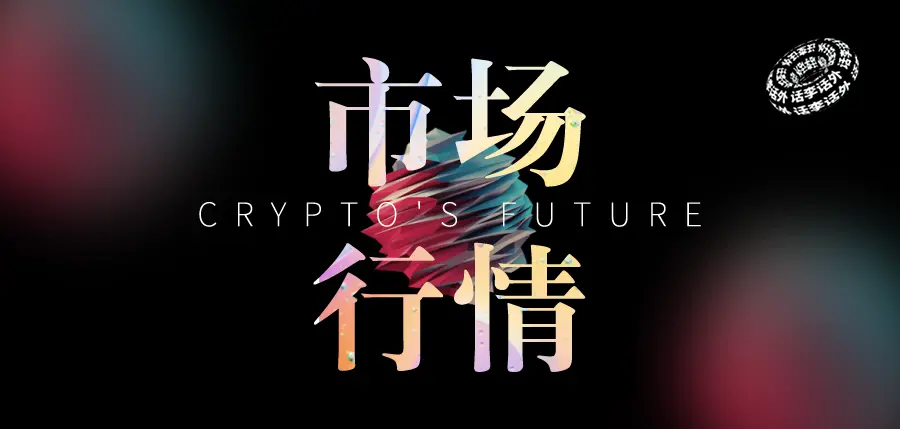Amber Group: Why is Modular Blockchain the Future?
Original Title: Is modular design the future?
Original Author: Robert McTague
Translated by: Qianwen, ChainCatcher
The past decade has been a time of continuous development for smartphones. At that time, some large companies believed they could revolutionize smartphone development by introducing modular architecture. In 2013, Google announced Project Ara, a smartphone that utilized modular design. Unlike the monolithic phones made of uniform aluminum and glass that we see today, Ara allowed users to customize their devices diversely, as key components were modular. This way, users did not need to regularly update their phones; they could simply add the latest parts to their old devices based on their preferences.
In the mobile ecosystem, modularity has not succeeded, and this concept has almost been forgotten in the history of technology. However, the idea of modularity has resurfaced in the blockchain field, and this time its fate may be different, adding a significant chapter to the history of blockchain development.
Monolithic vs. Modular
Smartphones have core components such as cameras, batteries, and touchscreens; similarly, blockchains have core components. A smartphone is a good example of a monolithic device. It comes equipped with all the parts needed to use the phone, offering few customization options. However, over time, if you want to experience a better camera, you have to buy a new phone. With a modular architecture, you no longer need to spend extra money. Instead, you just need to replace your phone's components.


Like smartphones, blockchains consist of multiple fundamental components :
Consensus: The consensus layer of the blockchain reaches an agreement on the state of the chain through a network of computers, providing ordering and final results.
Execution: This layer processes actual transactions by running specified code, and it is where users typically interact with the blockchain, such as signing transactions, deploying smart contracts, and transferring assets.
Settlement: The settlement layer verifies activities on L2, which includes rollups and the settlement layer. It is where the final state of the actual blockchain is recorded.
Data Availability: Data necessary for verifying the validity of state transitions is published and stored. In the event of an attack or operational error where the block producer cannot provide transaction data, it should be the easiest to recover and verify.
Disadvantages of Monolithic
Simply put, monolithic blockchains perform all these tasks within a single software, while modular blockchains separate them into multiple software.
This brings us back to an age-old question: the scalability trilemma.

Existing monolithic blockchains tend to optimize security and scalability within the triangle. Bitcoin and Ethereum emphasize decentralization and security as much as possible . However, this comes with insufficient transaction processing performance . Decentralized chains often lack the high bandwidth needed to execute transactions. Ethereum's limit is 20 transactions per second, while Bitcoin's limit is even lower. If we want to use these protocols globally, 20 transactions per second is far from enough. Some monolithic chains, at least theoretically, can bring us closer to global scale because their TPS and overall throughput are sufficient, but they often lack decentralization. Thus, the goal of modular architecture is to outsource some of the blockchain's work, creating more performant chains while maintaining decentralization.
Ethereum-Centric Ecosystem

Ethereum is currently a monolithic blockchain. Most other L1 blockchains are also classified as monolithic. Just like the smartphone example, certain functionalities of monolithic blockchains may sometimes lag behind newer chains. To address Ethereum's current bottleneck in throughput, developers are building rollup execution layers to increase transaction bandwidth.
Rollup execution layers are currently the most widely used scaling method on Ethereum. They are independent blockchains with stronger transaction execution capabilities, and their net results are settled on Ethereum, effectively inheriting Ethereum's (better) security and decentralization.
At a high level, rollups are blockchains that publish their net results to another blockchain. Additionally, rollups require fraud and validity proofs, as well as a permissionless method for inserting transactions. To achieve this, rollups synchronize data between two smart contracts deployed on L1 and L2, which distinguishes rollups from sidechains. These key components are essential for the security of rollups; without them, rollups can be shut down or censored.

Examples: Optimism, Arbitrum, Fuel, Scroll, ZkSync
Currently, most rollups have EVM compatibility to assist Ethereum developers in convenient migration, but in terms of computational efficiency and developer convenience, other execution layers may perform better. Features that users want may not exist on EVM-compatible chains, such as account abstraction. Given the wide range of developer preferences, this trend may continue, and we will see more new solutions enter the market, such as SolanaVM and MoveVM execution layers.
Fuel
Fuel is an execution layer that is not EVM-compatible and can perform computations that other rollups cannot accomplish. Fuel is also the first "modular execution layer," which can serve as a sovereign rollup, settlement chain, or even a monolithic chain. R ollup is just an execution layer, but F uel has more uses . Fuel demonstrates that execution layers can be creative and prioritize computational speed over EVM compatibility.

Kindelia
In addition to being one of the fastest computation layers, Kindelia features a unique proof system that utilizes its virtual machine. Kindelia's HVM provides near-instant proof checkers built into a smart contract language called Kind. Kind is essential because smart contracts can prove in their code that the code is secure, not exploited, and operates correctly. This type of design can address issues of poorly coded smart contracts.
Validium
Validium is a rollup system that moves data off-chain rather than storing it on-chain. The overall efficiency of rollup systems largely depends on the capabilities of their data availability layer. When this layer cannot handle the data produced by the rollup transaction sorter, it leads to bottlenecks in processing transactions. As a result, rollup systems cannot handle excess transactions, leading to increased fees and/or slow execution times.
Validium uses off-chain solutions, which introduces more trust assumptions. If an on-chain solution is desired to improve Ethereum's data availability layer, Danksharding can be considered.

Danksharding

Danksharding can integrate with Ethereum to become a streamlined platform for settlement and data access. Its innovation lies in its ability to aggregate multiple concepts. Rollup proofs and data validation are conducted within the same block, making the system seamless and efficient. To maintain normal operation, rollups need to store a large amount of compressed data. Danksharding provides a solution for this requirement, offering the potential for millions of TPS for multiple rollups.
Danksharding is a technology that shards network activity to increase the space of data blocks. Data blocks are a more efficient and standardized data format in Ethereum that can carry a large amount of data and are used by rollups to reduce fees. Danksharding utilizes "data availability sampling," allowing nodes to check only a small portion to verify a large amount of data, providing momentum for the emergence of cheaper and faster L2 networks while enabling direct transactions on Ethereum.
Danksharding will inherit all the security and decentralization of Ethereum itself. However, this technology also has drawbacks. Due to the relatively slow pace of Ethereum's development, it may take several more years to properly implement Danksharding on Ethereum. EIP-4844 plans to introduce Proto-Danksharding, which is the first step toward achieving Danksharding. EIP-4844 introduces a new transaction capable of carrying data blocks to enhance Ethereum's performance. This specialized rollup data storage paves the way for a more cost-effective fee market.
What if you want a fast data availability layer but don't want to wait for the release of Danksharding? Celestia might be the answer.
Celestia-Centric Ecosystem
For projects that cannot wait for Danksharding, one possible option is to utilize off-chain data availability solutions. Validium uses a "Data Availability Committee" (DAC) to prove data availability. However, this method is neither decentralized nor secure, as it relies on multi-signatures and there is no way to verify whether the DAC is currently honest or whether they have been honest in the past.
Celestium offers a more secure option than DAC. In the case of using Celestium, the proof of data is backed by the entire Celestia validator group, meaning that if ⅔ of the validators provide incorrect information, they will be punished, potentially losing a significant amount of money. This immediate mechanism is very strict, contrasting sharply with the absence of penalties in DAC.

Additionally, users can verify Celestia's honesty by running data availability sampling and checking quantum gravity bridges on the blocks. Quantum gravity bridges are trustless one-way messaging bridges between Celestia and Ethereum.
Celestium and Danksharding both utilize data availability sampling (DAS) to verify the non-malicious nature of all data. DAS allows nodes to download random fragments to ensure the availability of blocks and raises alarms if any part is lost. This alarm system is just one aspect of the fraud-proof DAS mechanism (like Celestia). Under a validity-proof DAS mechanism like Danksharding, an alarm system is unnecessary because validity proofs guarantee the correctness of erasure codes and commitments. These mechanisms reduce the likelihood of hiding block data and ensure that numerous nodes randomly check blocks.

Data sampling is the reason why Celestia and Danksharding are so secure. At least users can quickly discover issues, whereas in a DAC-like black box, problems may be concealed.
Sovereign Rollup: An Example with Fuel

Sovereign rollups function differently from traditional rollups on Ethereum, as they do not rely on L1 smart contracts to validate and append blocks to the chain. Instead, blocks are published directly to the chain as raw data, and nodes on the rollup are responsible for verifying local fork selection rules to find the correct chain. This shifts the responsibility of settlement from L1 to the rollup.
Unlike traditional rollups, there is no trust-minimized bridge established between sovereign rollups and Celestia. This can be seen as a negative aspect, as users would prefer the bridge to be as trust-minimized as possible, but it indeed gives sovereign rollups an advantage in independently upgrading through forks. This makes coordination easier to achieve and provides more security than upgrades offered by non-sovereign rollups. Technically, this is not considered a rollup, as rollups usually imply a unified settlement and data availability layer. For this reason, sovereign rollups are also simply referred to as sovereign blockchains.
To facilitate developers in creating sovereign rollups on Celestia, Celestia has created Rollmint to replace Tendermint as the consensus mechanism. This allows rollups to publish blocks directly to Celestia without going through the Tendermint program. Through this design, the community behind the chain has complete sovereignty, free from any other authoritative constraints. This is different from the communities behind smart contracts or rollups on Ethereum, which are bound by the social consensus of the Ethereum community.
Settlement Rollup: Fuel, Cevmos, dYmension

Settlement rollups have independent and modular settlement components. Currently, rollups utilize the Ethereum main chain for settlement, but there are other solutions as well. The Ethereum chain shares with other non-rollup applications for smart contract transactions, leading to reduced capacity and a lack of specialization.
An ideal rollup settlement layer should only allow simple transfers between rollup smart contracts and rollups while prohibiting non-rollup applications from conducting transaction settlements or making them expensive.
Celestia's design provides developers with a standard global state consensus layer to build execution layer rollups as part of a single trust-minimized cluster. It also implements trust-minimized bridging between rollups on the same global state consensus layer, a new concept that does not exist in the current architecture. Whether developers will adopt this new cross-rollup model remains to be seen.
Examples of settlement chains include Cevmos, Fuel, and dYmension, while Polygon is developing a modular architecture to compete with Celestia. In Polygon's modular design, Polygon Avail serves as a modular component for data availability and consensus, while the Polygon blockchain acts as the settlement layer.
Monolithic Blockchains
Many articles about modular blockchains often claim that monolithic L1 is an outdated technology compared to newer modular solutions. However, this viewpoint is difficult to fully substantiate, as a major issue with these scaling solutions is that they introduce further trust issues into the entire system. While we have discussed that most DACs and Validium may not be secure, this issue can even extend to execution layers (i.e., rollups).
Some of the most widely used rollups today have not yet achieved true decentralization, even though they ensure the security of billions of dollars. Additionally, the bridges between modular components, primarily sovereign rollups, will also face the insecurity that cross-chain bridges encounter. Finally, developing on top of a modular stack increases complexity; for some developers, this may be a challenge. We hope that ultimately rollups can solve these issues and achieve full decentralization. However, monolithic L1s are also attempting to innovate without relying on off-chain solutions, and during this period, they may also become equally decentralized.
Conclusion
Execution layers like Kindelia and Fuel will particularly achieve more user growth as they focus on speed and the implementation of new features, enabling applications built on them to innovate.
However, many of these modular designs remain untested, and some modular blockchain designs may never gain widespread adoption. With the widespread adoption of Celestia and Danksharding, Validium may be completely phased out. Sovereign rollups on Celestia may face some of the same bridging issues as existing L1s, hindering adoption due to security and complexity concerns.**
Decentralized, modular blockchains will still undergo a long development process in the future. In the meantime, monolithic blockchains will continue to play a role and innovate. When we eventually reach a point where modular blockchains are widely adopted, the development scenario for monolithic blockchains may also be completely different. In summary, we need scaling solutions to provide liquidity and user services for existing blockchains; in the long run, modular blockchain architecture may be the best way forward.











